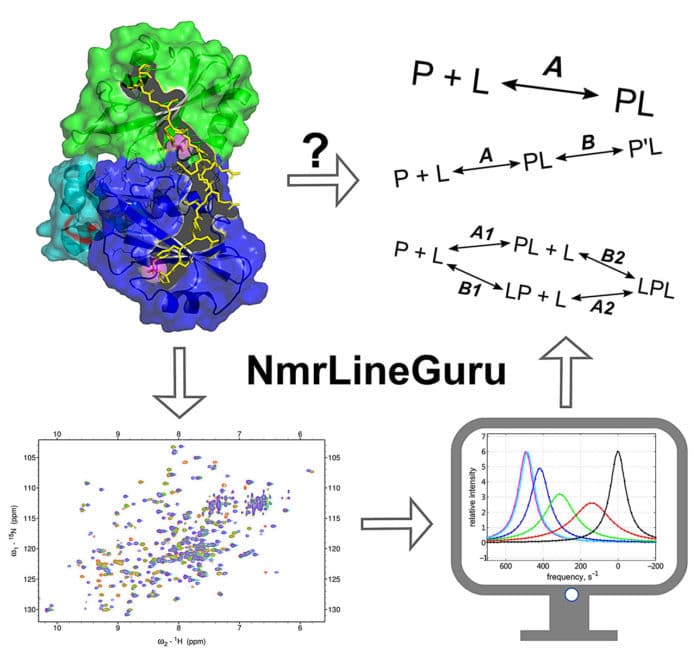Proteins play a crucial role in the growth of cancer in the body by stimulating molecules responsible for tumor growth. Now, scientists have taken a step forward toward developing more effective drugs to treat cancers and other diseases by better targeting specific sites on proteins in the body.
Originally, scientists from the Purdue University laboratory of Carol Post have developed a digital approach that allows scientists to study much more specific information about proteins that are linked to serious diseases to help in the drug discovery process. They have developed software called NmrLineGuru that allowed scientists to get one step closer to study much more specific information about proteins that are linked to severe diseases to help in the drug discovery process.
The software mainly supports the most common two-, three-, and four-state binding models used in the drug discovery industry to study such interactions between the proteins involved in a disease state and the molecules that bind to them. The software takes the information submitted by the user and creates specific model information about protein interactions.
Chao Feng, a postdoctoral researcher in Post’s lab, who helped lead the research team, said, “We created software for fast 1D nuclear magnetic resonance lineshape simulation and analysis with multistate equilibrium binding models.”
“Our work stems from a deep understanding of the need in the drug discovery field for better and faster solutions to understand the biological functions of proteins and molecules in the body.”
Their work is published in the Nov. 5 edition of Scientific Reports.
